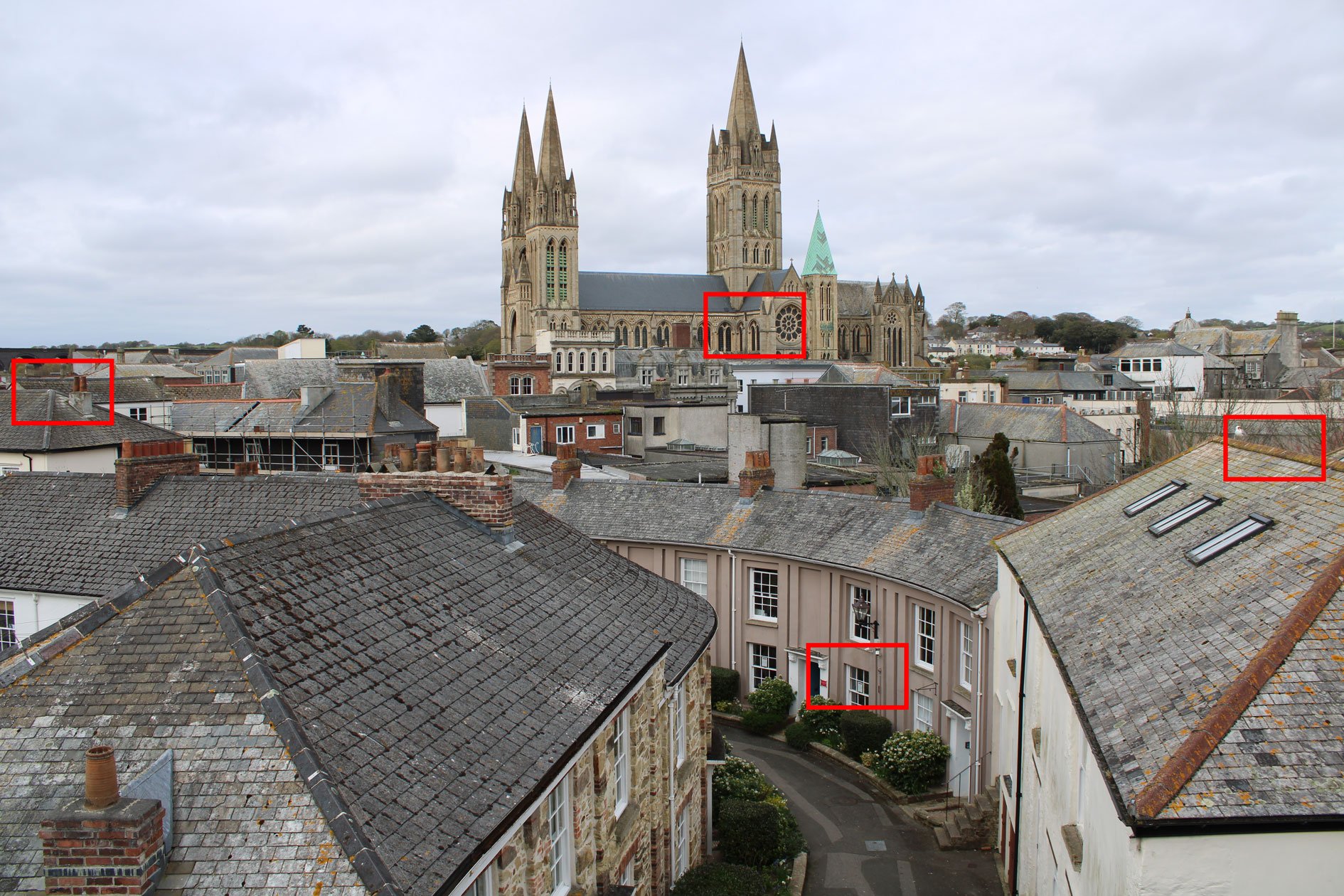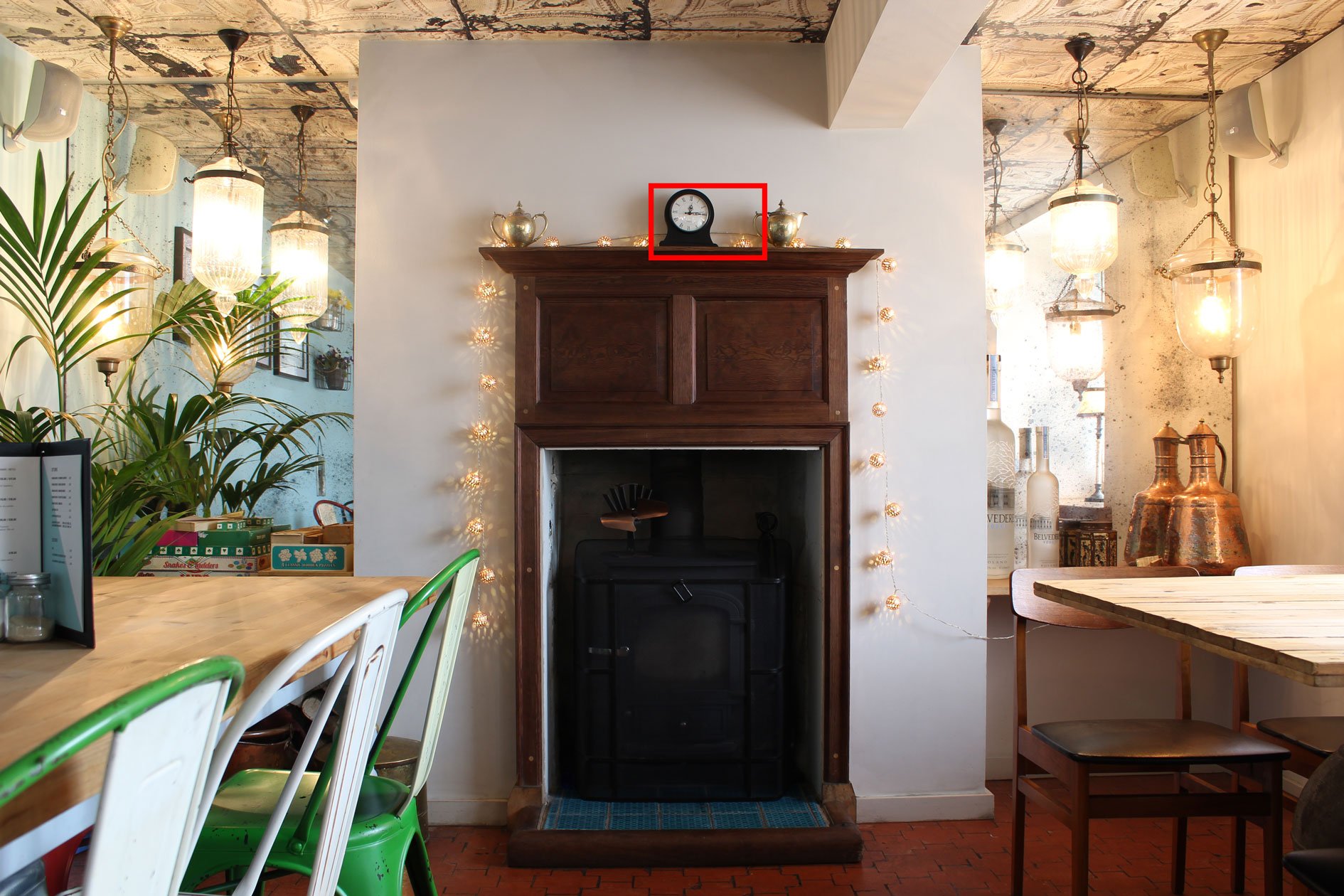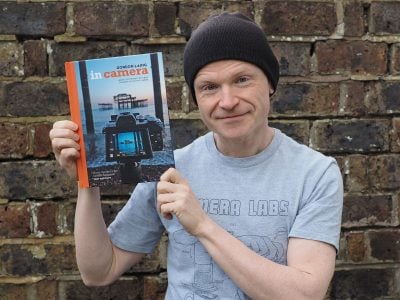Canon EOS 4000D review
-
-
Written by Ken McMahon
Quality
To test real-life performance, I shot this scene with the Canon EOS 4000D with its 18-55mm f3.5-5.6 III kit lens and the Canon EOS 2000D / Rebel T7 fitted with the EF-S 18-55mm f3.5-5.6 IS II kit lens. Both cameras were set to their best quality large fine JPEG setting and base 100 ISO sensitivity setting. The cameras were mounted on a tripod and image stabilisation was disabled on the EOS 2000D / Rebel T6. Aperture priority mode was selected for the exposure with the Aperture set to f5.6 which I’d previously determined produced best results. The EOS 2000D / Rebel T7 chose a shutter speed of 1/320, and I set +1/3EV exposure compensation on the EOS 4000D to match the same exposure. The crops are taken from the areas marked in red below.

Just a reminder that the the EOS 4000D’s 18 Megapixel sensor produces images measuring 5184×3456 pixels and the EOS 2000D / Rebel T7 has a 24 Megapixel sensor which produces images that are 6000×4000 pixels. Consequently in the crops from the EOS 4000D you’ll see a larger area with smaller detail. Casting my eye down both rows of crops two things strike me immediately. The first is the consistency in both sets of crops. The fourth crop which is from the right edge of the frame is little bit softer than the others but otherwise the quality is pretty consistent from edge to edge. The second thing is that, despite its higher resolution there doesn’t appear to be much more detail in the EOS 2000D / Rebel T7 crops than those from the EOS 4000D. The latter has smaller detail, but it doesn’t look any less well defined. But if you’re not getting any more detail from the EOS 2000D / Rebel T7’s sensor, the extra pixels will at least allow you to make bigger prints, or enjoy better quality on a big high resolution screen. It also gives you the opportunity to crop in a little and still print or display large.
Canon EOS 4000D vs Canon EOS 200D / Rebel T7 (100% crops)

Above left: Canon EOS 4000D at f5.6. Above right: Canon EOS 2000D / Rebel T7 at f5.6

Above left: Canon EOS 4000D at f5.6. Above right: Canon EOS 2000D / Rebel T7 at f5.6

Above left: Canon EOS 4000D at f5.6. Above right: Canon EOS 2000D / Rebel T7 at f5.6

Above left: Canon EOS 4000D at f5.6. Above right: Canon EOS 2000D / Rebel T7 at f5.6
Canon EOS 4000D Noise
To evaluate the noise quality of their sensors, I photographed this still-life scene with the Canon EOS 4000D and the Canon EOS 2000D / Rebel T7 fitted with their respective kit lenses. Both cameras were mounted on a tripod and set to their best quality Jpeg image settings. I disabled Auto lighting optimizer on both cameras and turned off the stabilisation on the EOS 2000D / Rebel T7’s lens (The EOS 4000D’s lens isn’t stabilised). Both cameras were set to Aperture priority exposure mode and f5.6 was selected. At 100 ISO both cameras metered an exposure of half a second. The crops are taken from the area marked in red below.
With more photosites packed onto a sensor of the same physical size, you might expect the EOS 2000D / Rebel T7’s sensor to be the noisier of the two. I’ve looked long and hard at these two columns of crops and I honestly can’t see a great deal of difference. Certainly at the base 100 ISO setting both sets of crops looks clean and well detailed. At 200 ISO there’s a very fine texture visible, but you have to look hard to spot it and similarly at 400 ISO there’s easily visible noise texture, but it’s not interfering with image detail. At 800 ISO the noise does start to affect the finer detail and at 1600 ISO it’s more obvious. Also the 1600 ISO crops are the first ones where you can spot a difference – if you look at the boundary between the clock and the wall you can see slightly more noise texture in the EOS 2000D / Rebel T7 crops. Interestingly, the gap doesn’t widen and from 3200 ISO to the extended 12800 ISO setting there again isn’t much between them.
Both of these sensors, in combination with the Digic 4+ processor do a great job of of keeping noise to a minimum at the lower and mid range of the ISO sensitivity scale. It’s not until you get beyond 1600 ISO that the noise starts to get ugly. I’d be happy with a full size print from either camera at 1600 ISO. If you’re asking yourself if it’s worth spending a little extra on the EOS 2000D, but are worried about the noise potential on the higher resolution sensor, well, that’s clearly not an issue.

Canon EOS 2000D / Rebel T7 vs Canon EOS 4000D Jpeg noise

Above left: Canon EOS 4000D at 100 ISO. Above right: Canon EOS 2000D / Rebel T7 at 100 ISO

Above left: Canon EOS 4000D at 200 ISO. Above right: Canon EOS 2000D / Rebel T7 at 200 ISO

Above left: Canon EOS 4000D at 400 ISO. Above right: Canon EOS 2000D / Rebel T7 at 400 ISO

Above left: Canon EOS 4000D at 800 ISO. Above right: Canon EOS 2000D / Rebel T7 at 800 ISO

Above left: Canon EOS 4000D at 1600 ISO. Above right: Canon EOS 2000D / Rebel T7 at 1600 ISO

Above left: Canon EOS 4000D at 3200 ISO. Above right: Canon EOS 2000D / Rebel T7 at 3200 ISO

Above left: Canon EOS 4000D at 6400 ISO. Above right: Canon EOS 2000D / Rebel T7 at 6400 ISO

Above left: Canon EOS 4000D at 12800 ISO. Above right: Canon EOS 2000D / Rebel T7 at 12800 ISO
Check prices at Amazon, B&H, Adorama, or Wex. Alternatively get yourself a copy of my In Camera book or treat me to a coffee! Thanks!



